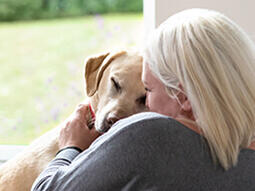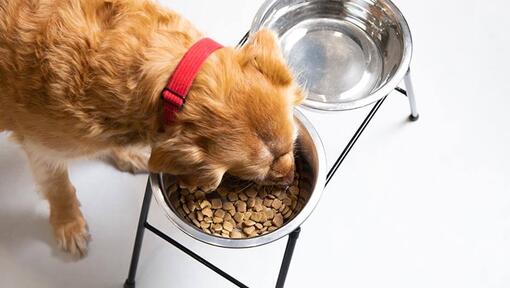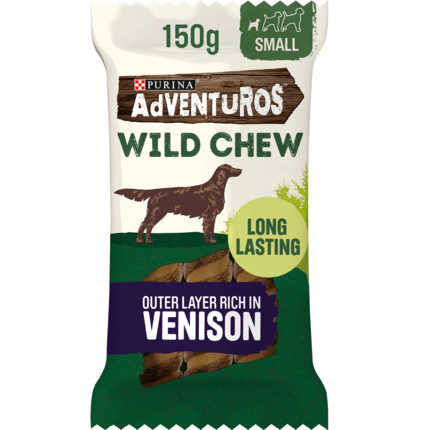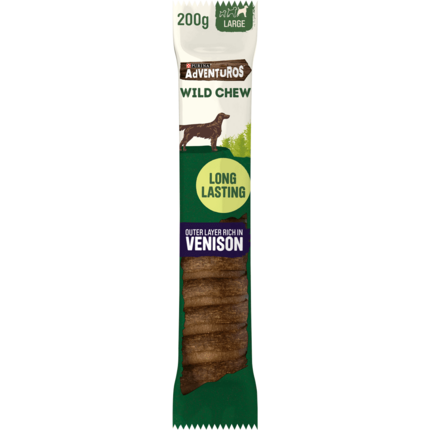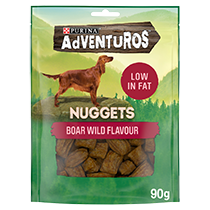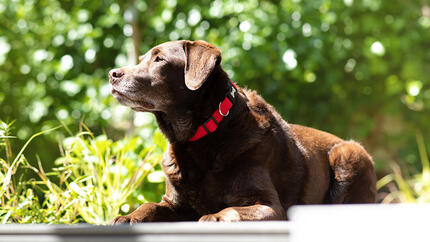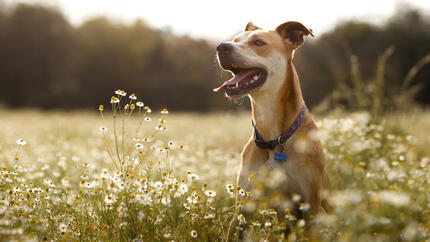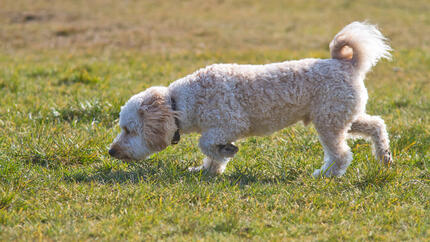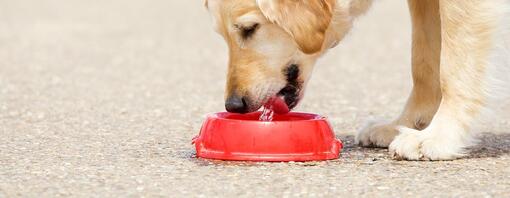
Water is essential to keep your dog hydrated and to regulate their body temperature. But how much water should your dog drink? Find out all you need to know to keep your dog hydrated in this guide.
Water is essential to keep your dog hydrated. It’s actually even more vital for dogs than humans, in order to prevent them from overheating. Our canine friends release heat from their body differently to us. Dogs can only sweat a small amount from their nose and paw pads. The main way that dogs lose body heat to cool down is through panting, which results in a lot of water loss through evaporation. Because of this, keeping your dog hydrated is especially important on hot days.
If you’re concerned your dog is drinking too much or too little, or are just wondering how much water your dog should drink per day, keep reading to find out all you need to know.
How much water should a dog drink per day?
How much is normal for your dog to drink will depend on a variety of factors, including their size, activity level and diet. For example, if they’re being fed a wet diet they won’t need to drink as much, as wet dog food contains 65-80% water. Dry dog food only contains around 20% water, so they will need to drink more water on a dry diet. The rough guide is that your dog should drink 40-60ml per kilo of body weight per day, and this is the same for puppies and dogs of any age.
Check out the guide below and find out roughly how much your dog should drink per day depending on their weight:
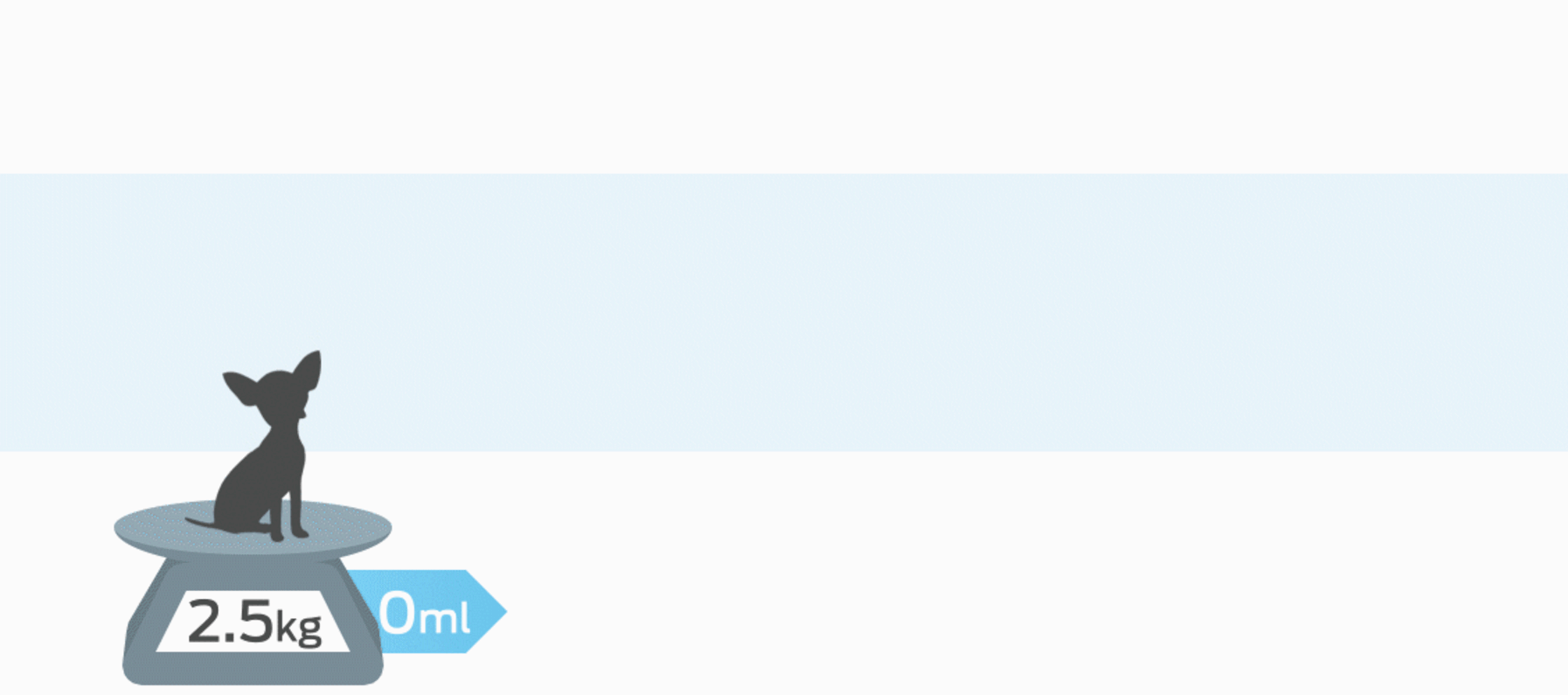
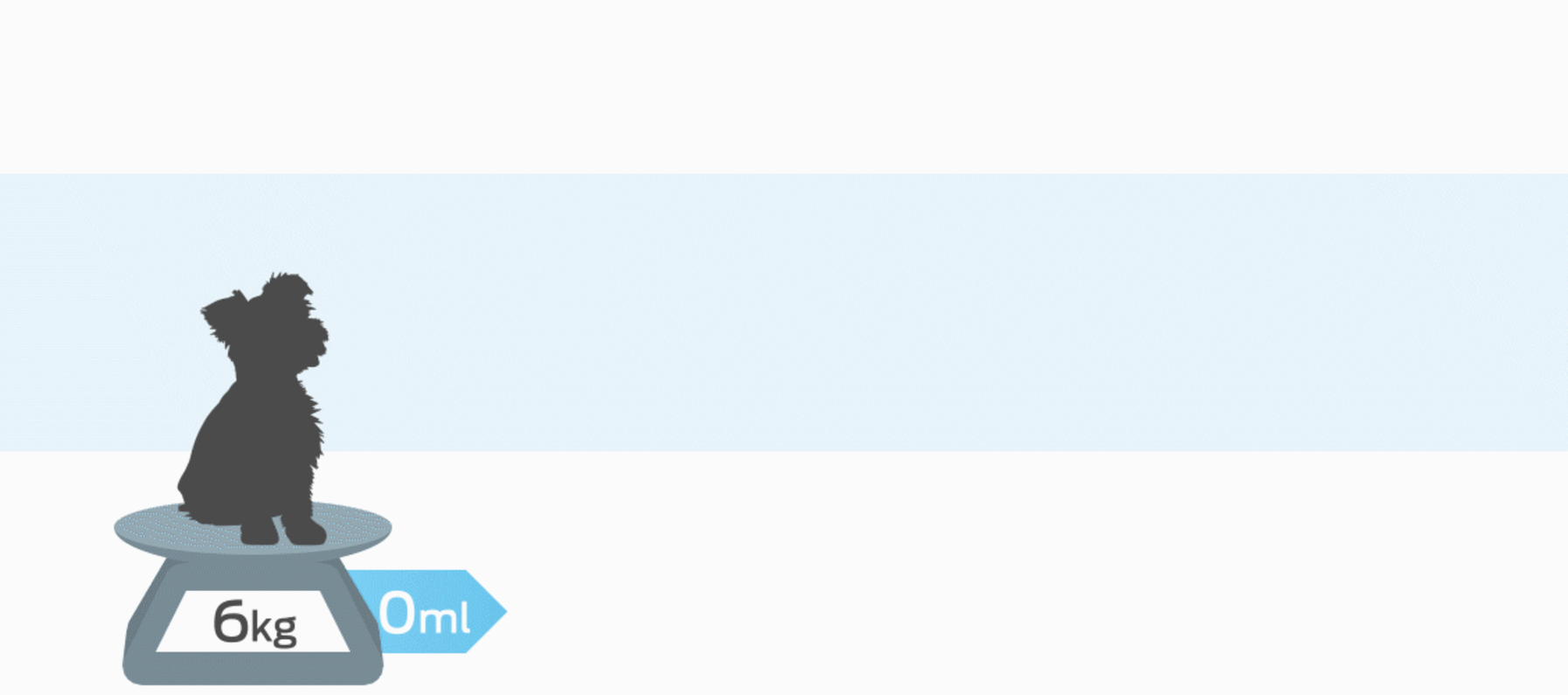
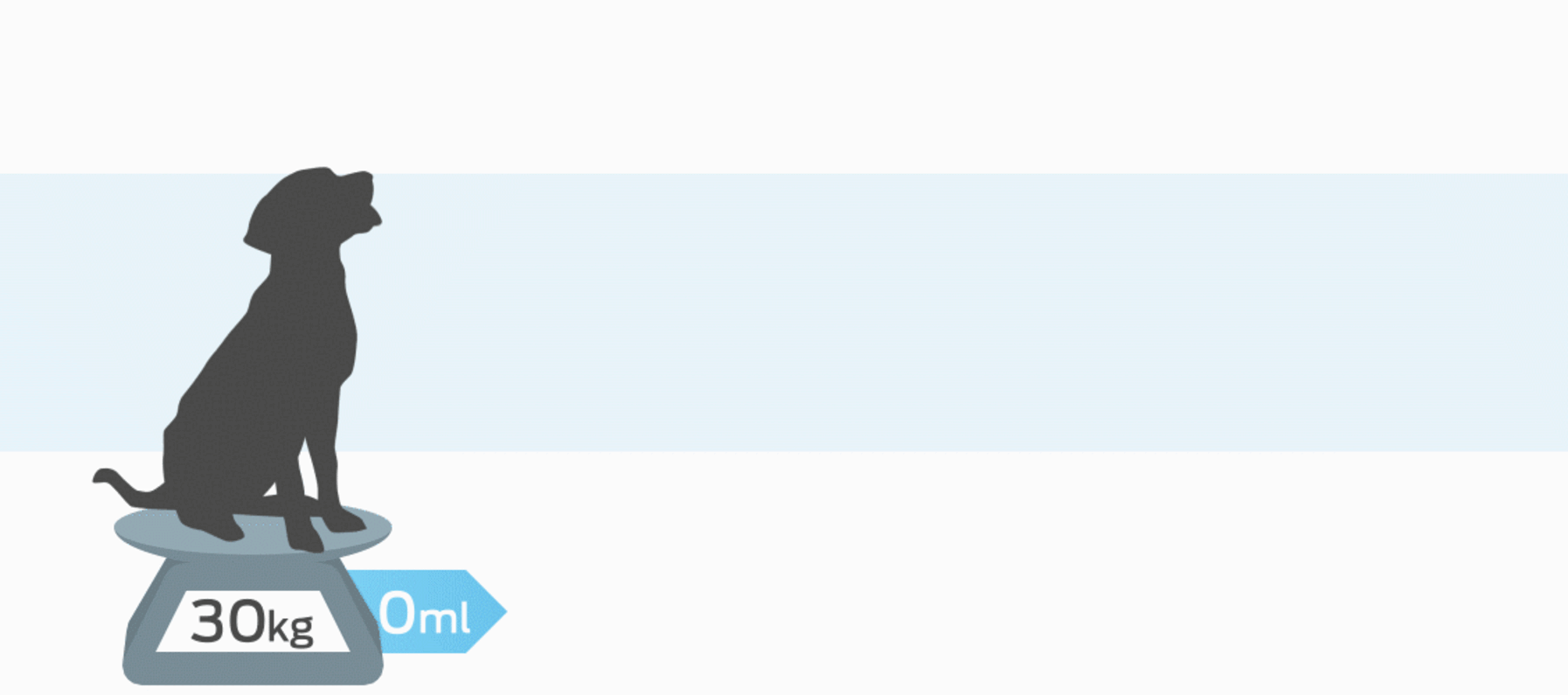
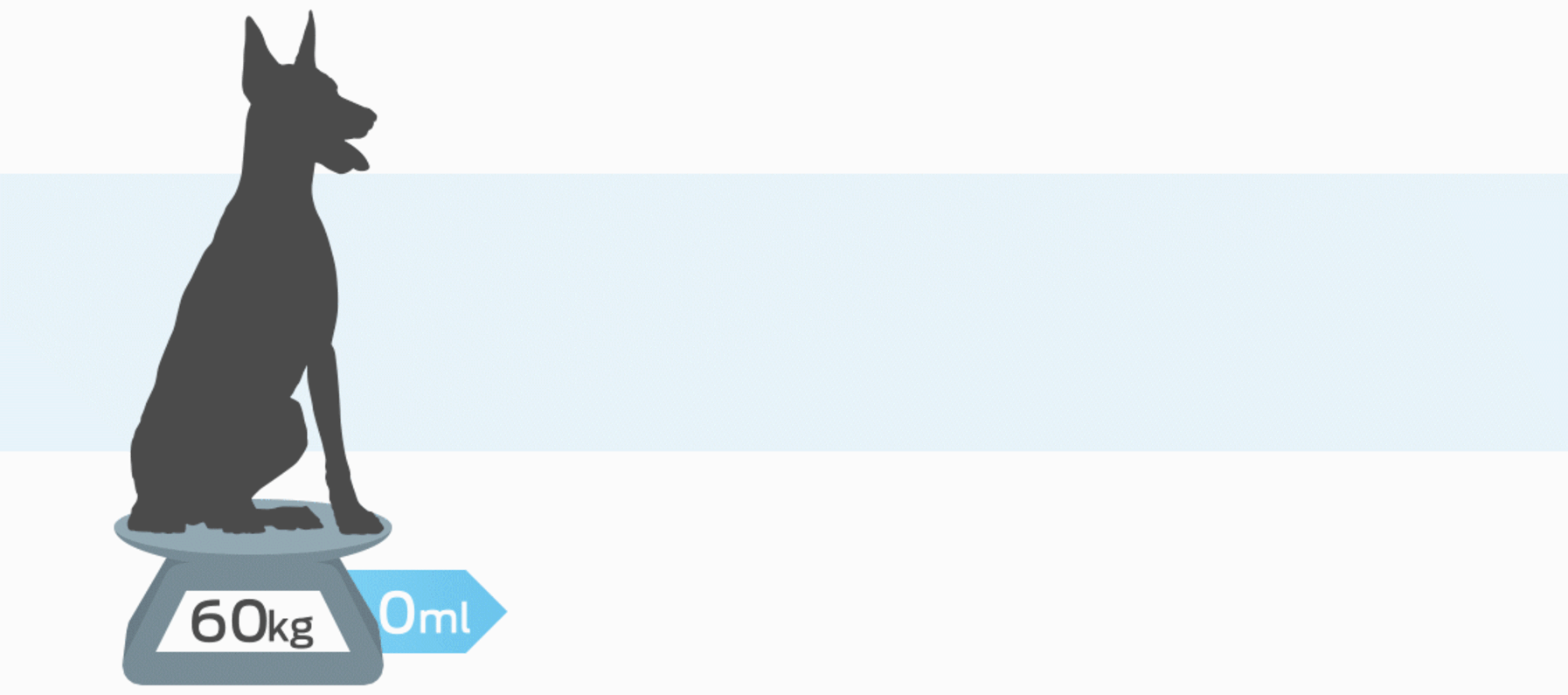
My dog’s not drinking water
If your dog’s not drinking water, or seems to have reduced their water intake significantly it could be down to a few reasons, including:
Lack of exercise
If the weather’s cooler and/or your dog has been doing less exercise their water intake may decrease. This is because they won’t need to lose as much heat so won’t be losing as much water through evaporation.
Taste of the water
Dogs have a super keen sense of smell and if the water smells unfamiliar – for example if you’re in a different location – they may be reluctant to drink it. If your dog tends to do this, you can add more water to their food to increase water intake.
Unclean bowl
Most dogs will relish drinking from muddy puddles, however they do still like their drinking bowl to be clean! Dirty water bowls can be a health hazard for your dog as they contain bacteria, but it’s also not nice for them to drink. Make sure you give them clean, fresh water every day. Remember to wash your dog’s water bowls out regularly with mild soapy water, and rinse thoroughly.
Sometimes your dog not drinking water may have to do with the fact they’re getting older. As dogs age, their exercise, appetite and thirst levels may decrease. They may also be suffering from arthritis and find it difficult to get up to drink, or to bend their head down to the water bowl.
Older dogs are still prone to dehydration, and elevating their bowl and putting it on a non-slip surface close to their bed may help them to drink comfortably. Older dogs may also drink more due to various medical conditions common in older age. Keep an eye on your dog’s water consumption and if you think they are drinking too little or too much it’s important to consult your vet.
Fear or negative experiences
If your dog has had a negative experience with water in the past, such as having their tail stepped on whilst they were drinking, they may develop a negative association with drinking from their bowl. If you suspect this is the case, try moving or changing their bowl.
Oral disease
Dogs with diseases in the mouth, including dental disease or problems with their jaw, may find it difficult or uncomfortable to drink. You may notice them going to the water bowl as if wanting to drink, but then drinking slowly, with difficulty or turning away. If it’s an oral problem, they may also be eating less and you should take them to the vets for diagnosis and treatment.
Nausea
Sometimes if your dog feels sick, they may not want to drink. If this is the case, monitor your dog and if your dog vomits three or more times over 8 hours, or if there’s any blood present, contact the vet for advice. Nausea can also cause dogs to drink excessively and then vomit.
If your dog’s constantly refusing to drink, err on the side of caution and consult a vet.
My dog’s drinking more water
Drinking an excessive amount of water is known as ‘polydipsia’. If your dog’s drinking more water, it’s likely due to the fact they’re losing more water in some way or other. A few issues which may cause them to drink more include:
- Urinary tract infection
- Liver disease
- Kidney disease
- Pyometra: an infected womb
- Cushing’s disease: a hormonal disease
- Addison’s disease: a hormonal disease
- Diabetes
- High calcium levels (which can be associated with some types of cancer)
- Certain medications such as steroids
- Hot weather: dogs will pant and salivate more, resulting in increased water loss
It’s quite rare, but sometimes dogs can develop ‘psychogenic polydipsia’, a behavioural condition that presents as excessive thirst. It’s most commonly seen in bored or stressed dogs or simply in breeds that love water, and the issue isn’t usually connected to any underlying conditions.
If your dog’s drinking more water, it’s natural that they’ll be needing to urinate more, which may result in accidents around the house. However, it’s incredibly important to never restrict your dog’s water intake as it may make certain conditions worse. Instead, take your dog to the vet for diagnosis.
That’s our guide to how much your dog should drink a day, want to find out more about common symptoms to look out for? You can also find out how watermelon can hep to keep your dog hydrated. Read our article on what to do if your dog is not eating, next.

